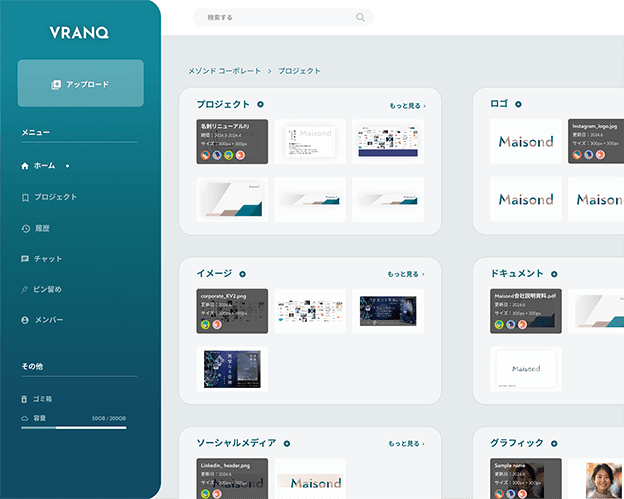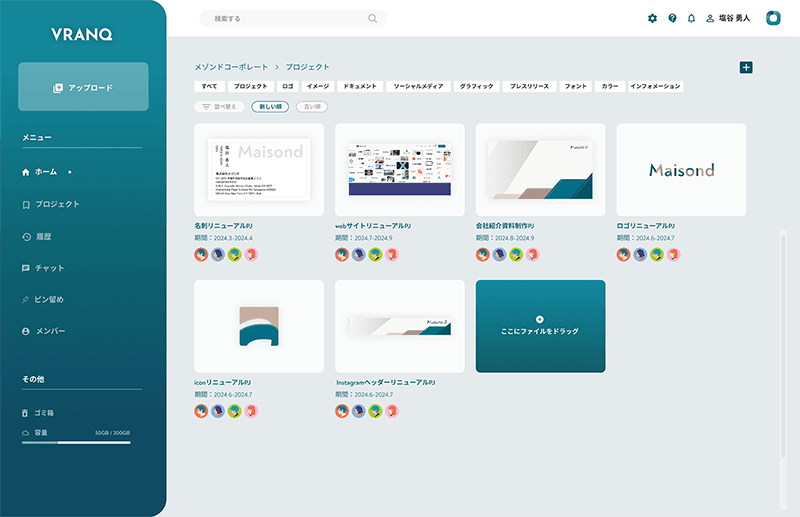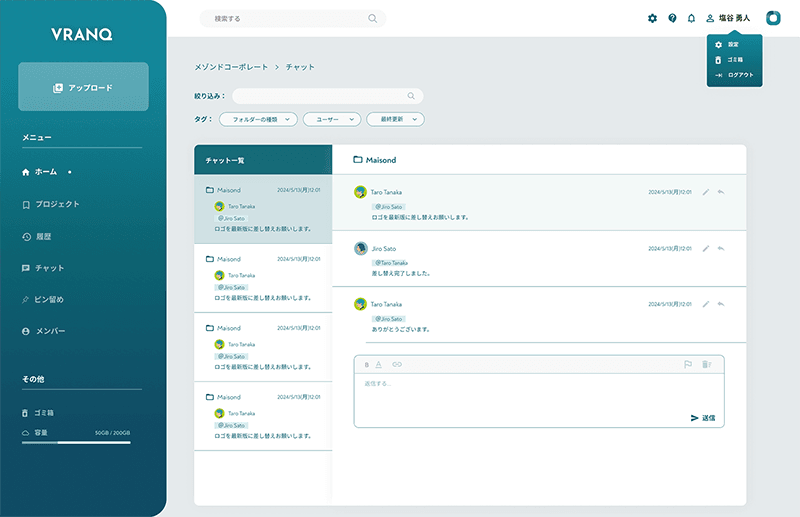Brand Assets Management
This is a brand asset management tool designed to appropriately manage and swiftly share your company’s brand assets.
By centrally managing brand assets handled by specific departments or individuals as corporate assets, it facilitates version control and streamlines communication in the digital domain.
Branding+Assets Management
-
Manage brand design solely within an internal brand or design team
-
Outsource or share brand design with external production agencies
-
Hold one individual or a single department solely responsible for brand management
It’s outdated.。
By enabling everyone to seamlessly access, view, manage, and share brand assets in real time, we can eliminate wasted time. In addition, quantitatively measuring brand performance allows for broad contributions—from brand crisis management to boosting internal engagement.
Ultimately, the goal is for every person involved to feel a deep sense of responsibility for fulfilling the brand’s promise to its customers, working together to continuously shape and elevate it.

-
Automated AI
Automatically categorizes and tags assets based on their type and format, analyzing corporate trends.
-
Management, Viewing, and Sharing
Comprehensive management of design assets, including logos, graphics, advertisements, web data, promotional materials, social media content, company documents, trademarks, and regulations.
-
Analysis and Tracking<
Analyzes performance trends in brand recognition and tracks access and usage.
-
Security
Real-time modifications of online access and permissions.
VRANQ enables consistent control of brand experiences.
For instance, there is no need to manually announce changes to logos or assets every time brand guidelines are updated. All stakeholders are notified in real-time, allowing for the deployment of a consistent brand design across all situations and roles.
Additionally, the use of AI for automated categorization sets it apart from standard online storage services.

BENEFIT
When it comes to branding, it often extends beyond a single design output. Challenges such as maintaining creative control and influencing user impressions make it inherently qualitative, presenting certain hurdles when it comes to budgeting.
Additionally, the most common issues in brand management arise from human error (e.g., providing outdated logos, misunderstanding regulations, etc.). By updating in real-time, stakeholders can ensure that brand guidelines are consistently upheld and experience the assurance of alignment with brand policies.

Time Savings
Optimized to store everything in one place for quick searching, assets can be easily located. File types are grouped, allowing specific assets to be found and shared in minutes, enabling valuable time to be spent on more critical tasks. With a more intuitive and comprehensive system, images are automatically tagged, filtering and searching are faster, and various export formats are supported.

Cost Reduction
Once assets are stored in the system, you can rest assured. These assets can be retrieved quickly and easily whenever needed. Since all assets are securely stored in one place, it becomes significantly easier to revive or repurpose past successful content.

Maintaining Control
You can meticulously manage which users have access to organizational assets. With governance tools, administrators can assign different permissions to different users. For instance, editing, downloading, or approval rights can be restricted for certain users or roles, while others may be granted broader authority.

Ensuring Quality and Consistency
A single inventory containing only the latest approved assets and content includes clear guidance on how and where these assets should be used. This ensures that brands don’t need to worry about inconsistencies or inaccuracies in messaging or product information.

Performance Measurement
Tracking the performance of creative assets and measuring their effectiveness is essential. Using analytics tools, brands can monitor where and by whom the content is being used and measure its performance. By understanding what works and what doesn’t, brands can adapt strategies and optimize assets for maximum impact, ultimately increasing return on investment (ROI).







